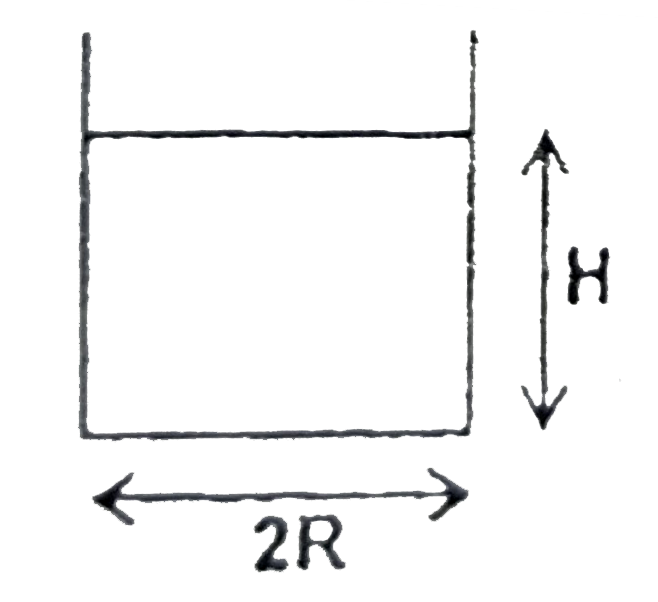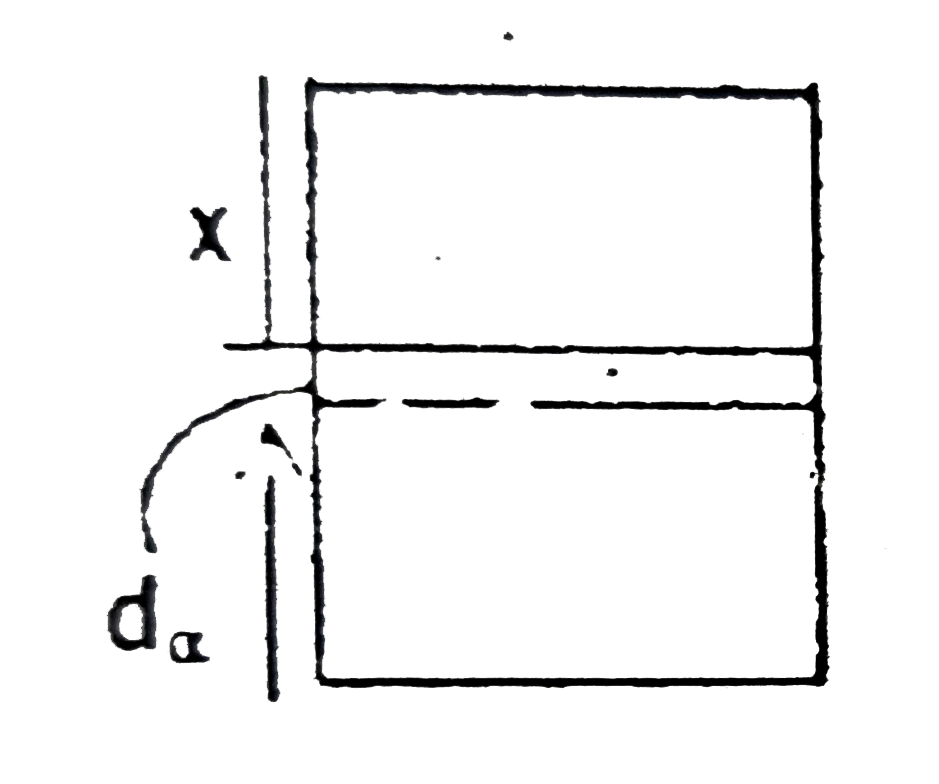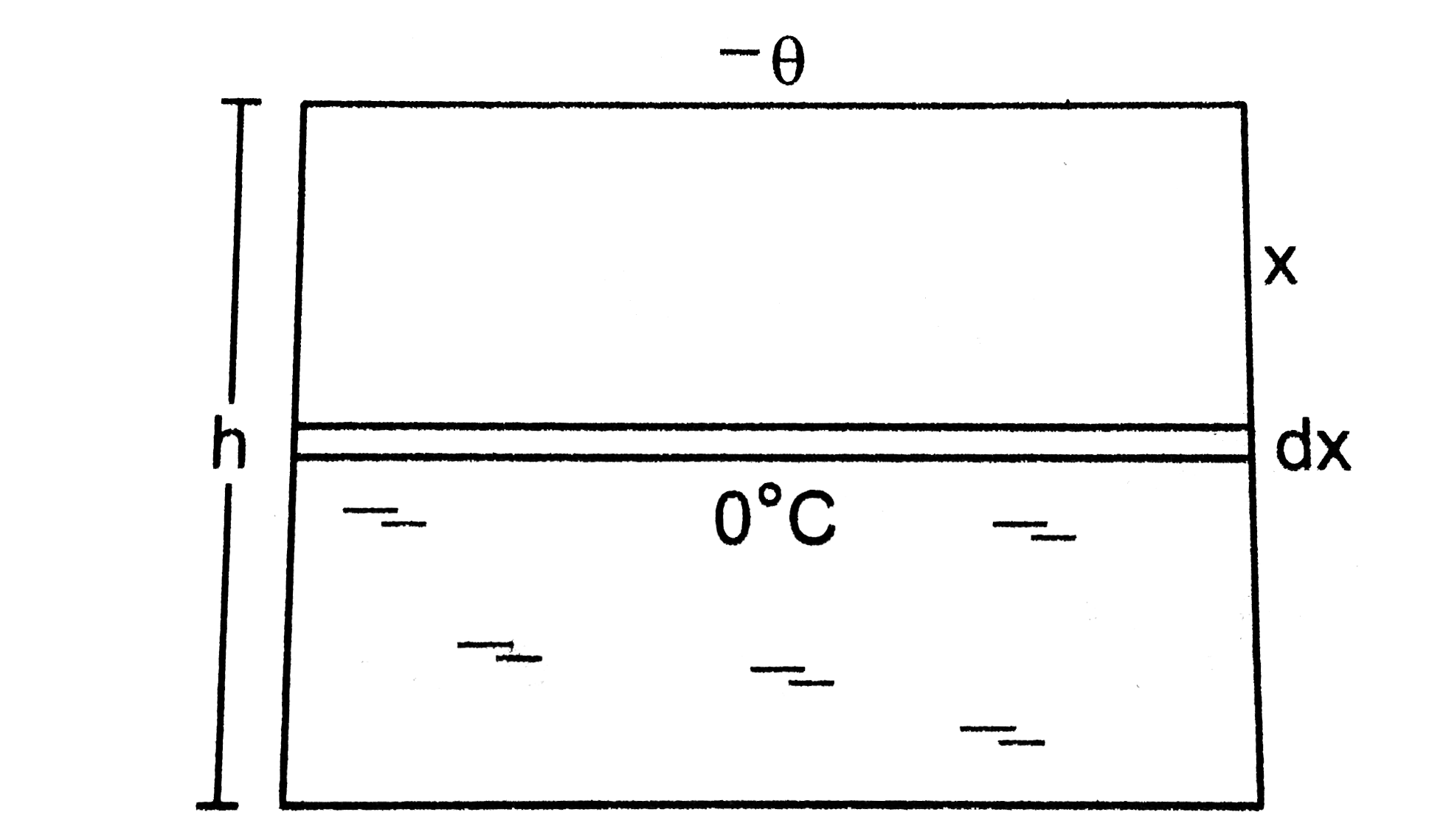On a cold winter dry, the temperature of atmosphere is −T∘C. The cylindrical dram shown is made of insultating material and it contains water at 0∘C. If L is latent heat of fusion of ice, ρ is density of ice and KR is thermal conductivity of ice, the time taken for total mass of water to freeze is

ρLH2KT
ρLH22KT
ρLH2KT
H2ρLKT
ρLKT∫40xdx=∫T0dt⇒T=ρLH22KT

Topper's Solved these Questions
- BOOK - FIITJEECHAPTER - GMP ASSESMENTEXERCISE - Assertion & Reason15videos
GMP ASSESMENT
- BOOK - FIITJEECHAPTER - GMP ASSESMENTEXERCISE - Multiple Question58videos
GMP ASSESMENT
- BOOK - FIITJEECHAPTER - GMP ASSESMENTEXERCISE - Numerical Based61videos
GMP ASSESMENT
- BOOK - FIITJEECHAPTER - GENERAL PHYSICSEXERCISE - MATRIX MATCH TYPE3videos
GENERAL PHYSICS
- BOOK - FIITJEECHAPTER - GRAVITATIONEXERCISE - Numerical based Question2videos
GRAVITATION
Similar Questions
On a cold winter day, the atmospheric temperature is −θ (on Celsius scale) which is below 0∘C. A cylindrical drum of height h made of a bad conductor is completely filled with water at 0∘C and is kept outside without any lid. Calculate the time taken for the whole mass of water to freeze. Thermal conductivity of ice is K and its latent heat of fusion is L. Neglect expansion of water on freezing.
 View Solution
View SolutionCalculate the amount of heat required to convert5g of ice of 0∘C into water at 0∘C.
( Specific latent heat of fusion of ice 80cal/g )View Solution
Knowledge Check
- Question 1 - Select One
M g of ice at 0∘C is to be converted to water at 0∘C. If L is the latent heat of fusion of ice, the quantity of heat required for the above operation would be
AML calBMLCLM calDnone of these - Question 2 - Select One or More
1 kg of ice at 0∘C is mixed with 1.5 kg of water at 45∘C [latent heat of fusion = 80 cal//gl. Then
Athe temperature of the mixture is 0∘CBmixture contains 156.25 g of iceCmixture contains 843.75 g of iceDthe temperature of the mixture is 15∘C. - Question 3 - Select One
7500 cal of heat is supplied to 100g of ice 0∘C. If the latent heat of fusion of ice is 80 cal g−1 and latent heat of vaporization of water is 540 cal g−1, the final temperature of water is
A100∘CB90∘CC0∘CD20∘C
On a winter day when the atmospheric temperature drops to −10∘C, ice form on the surface of a lake.
(a) Calculate the rate of increases of thickness of the ice when 10cm of ice is already formed.
(b) Calculate the total time taken in forming 10cm of ice. Assume that the temperature of the entire water reaches 0∘C before the ice starts froming. Density of water =1000kg/m3, latent heat of fusion of ice =3.36×105J/kg and thermal conductivity of ice =1.7W/m−∘C. Neglect the expansion of water on freezingView SolutionAn ice layer of thickness d1 is floating on a pond of water. The atmospheric temperature is -T∘C. What is the time taken for the thickness of the layer to increase from d1 to d2 if L, ρ and K are the latent heat of fusion of water, density of ice and thermal conductivity of ice, respectively?
View SolutionCalculate the amount of heat energy to be supplied to convert 4 kg of ice at 0∘C completely into water at0∘C if latent heat of fusion for ice is 80 cal/g.
View SolutionCalculate the amount of heat energy to be supplied to convert 2 kg of ice at 0∘C completely into water at0∘C if latent heat of fusion for ice is 80 cal/g.
View SolutionOn a winter day when the atmospheric temperature drops to −10∘C , ice forms on the surface of a lajke. (a) Calculate the rate of increases of thickness of the ice when 10cm of ice is already formed. (b) Calculate the total time taken in forming 10cm of ice. Assume that the temperature of the entire water reaches 0∘C before the ice starts forming. Density of water =1000kgm−3 , latent heat of fusion of ice =3.36×105Jkg−1 and thermal conductivity of ice =1.7Wm−1^(@)C^(-1) . Neglect the expension of water on freezing.
View Solution

